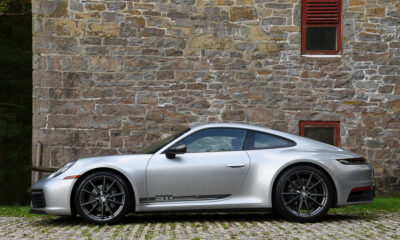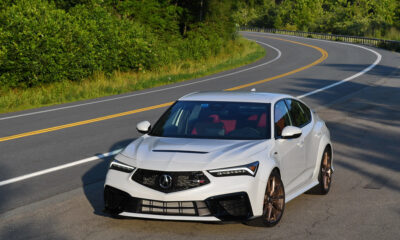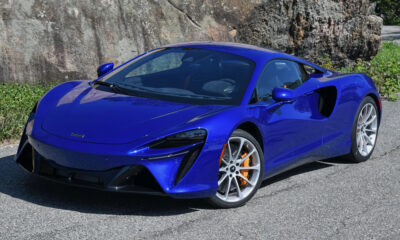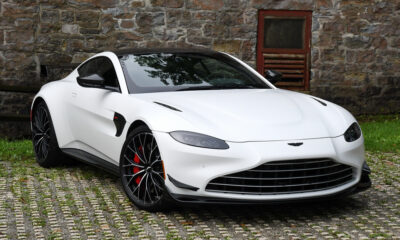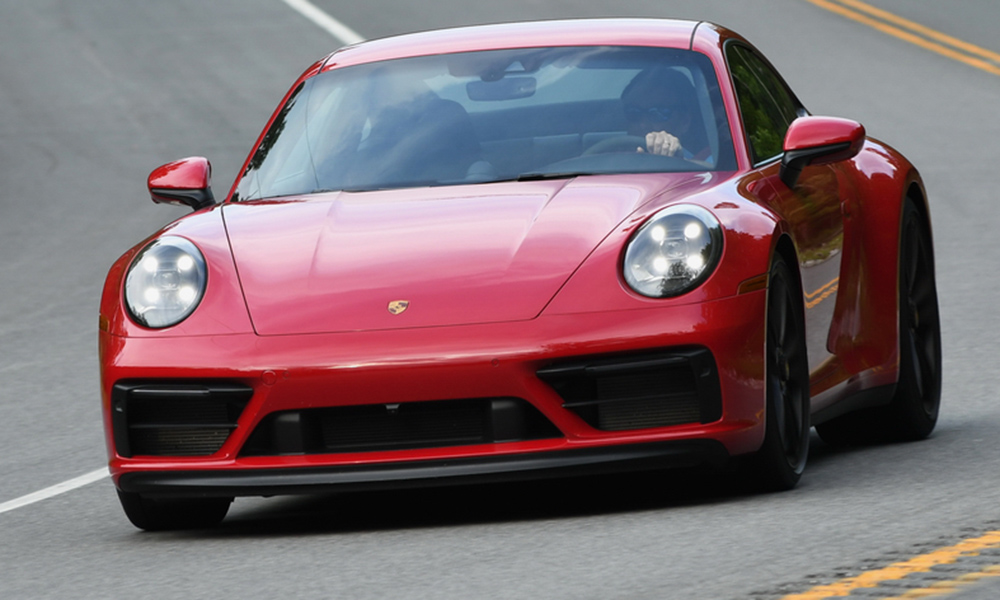
Photo: David Haueter
If you’re in the market for a Porsche 911, there’s no shortage of model options available. From the base $106,100 (USD) 911 Carrera model up through the new $223,800 (USD) 911 GT3 RS, there’s a plethora of models that add more power and features as you move up the ladder, and buyers also have the option of coupe, targa and convertible models.
They’re all excellent sports cars, but the real sweet spot in the lineup may just be the car you see here, the 911 Carrera 4 GTS coupe.
In terms of price and power, the 911 GTS models slot in above the Carrera S models and below the 911 GT3.
Buyers have the choice of either rear-wheel drive or all-wheel drive with coupe and convertible models, while the targa comes in all-wheel drive only. Moving up to all-wheel drive adds $7,300 to the price of the rear drive GTS coupe, to bring the price to $149,900 for the Carrera 4 GTS coupe.
Opting for either the targa or cabriolet all-wheel drive GTS models moves the price up to $162,700.

Photo: David Haueter
All GTS models are powered by the same 3.0-liter twin-turbo six-cylinder engine that makes 473hp @ 6,500rpm and 420 lb.-ft. of torque from 2,300-5,000rpm.
Those numbers are up by 30hp and 23 lb.-ft. over the Carrera S model, and just 29hp shy of the 911 GT3. The GTS also makes a lot more torque at lower engine speeds than the 911 GT3s 346 lb.-ft. at 6,100rpm, which is due to the more high-revving and charismatic nature of the GT3 model.
Buyers have the choice of either an 8-speed dual clutch automatic with paddle shifters, or a 7-speed manual.
Besides the power increase, which comes from a 14.5 percent increase in boost to 18.3psi, the GTS has a PASM (Porsche Active Stability Management) suspension that lowers ride height by 10mm and has unique dampers, as well as helper springs on the rear axle that are borrowed from the 911 Turbo.
The brakes are also borrowed from the 911 Turbo and measure 408mm up front and 380mm at the rear, and the center-locking wheels are lifted from the Turbo S. Add to that the Sport Exhaust and the black accents that are part of the GTS appearance upgrades, and you end up with a car that’s more purposeful and sportier than the Carrera S.
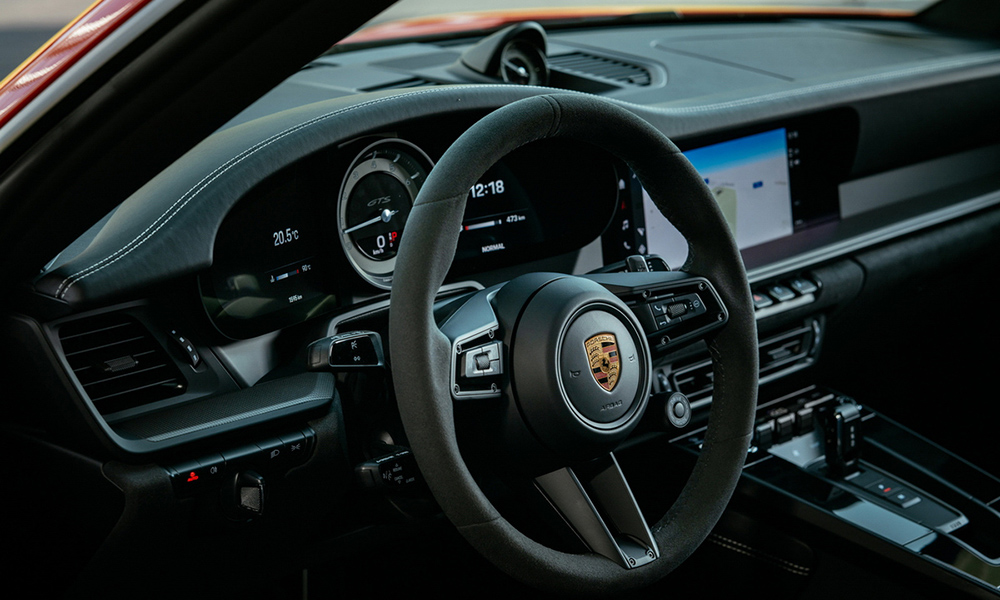
Photo: Porsche
Inside, the GTS has a lot of Alcantara-like Race-Tex upholstery on the seat centers, steering wheel and door handles.
Our test car had the Carmine Red interior package, which features red stitching on the seats and dash, as well as carbon fiber trim instead of the standard brushed aluminum. One minor dislike I had in the cockpit is the dainty gear lever for the dual-clutch automatic, which seems a little out of place here.
Porsche gives buyers four different seat options ranging from the comfort seats to full bucket seats that are a great option if you plan to track the car.
Our car had the comfort seats, and they were still plenty supportive for sporty driving. For ultimate performance, Porsche also offers a lightweight package that removes the rear seats and has further reduction of sound deadening, as well as lightweight glass and battery, which saves around 55 lbs.
All 911s are fast, and the Carrera 4 GTS is the fastest of the non-Turbo models, with a 3.1-second sprint from 0-60mph with the Sport Chrono option that was on our test car. That’s only three-tenths faster than the Carrera 4S model but nine-tenths faster than the Carrera 4.
With more torque available at lower rpms and all-wheel drive, it’s also a tenth faster to 60 than the 911 GT3.
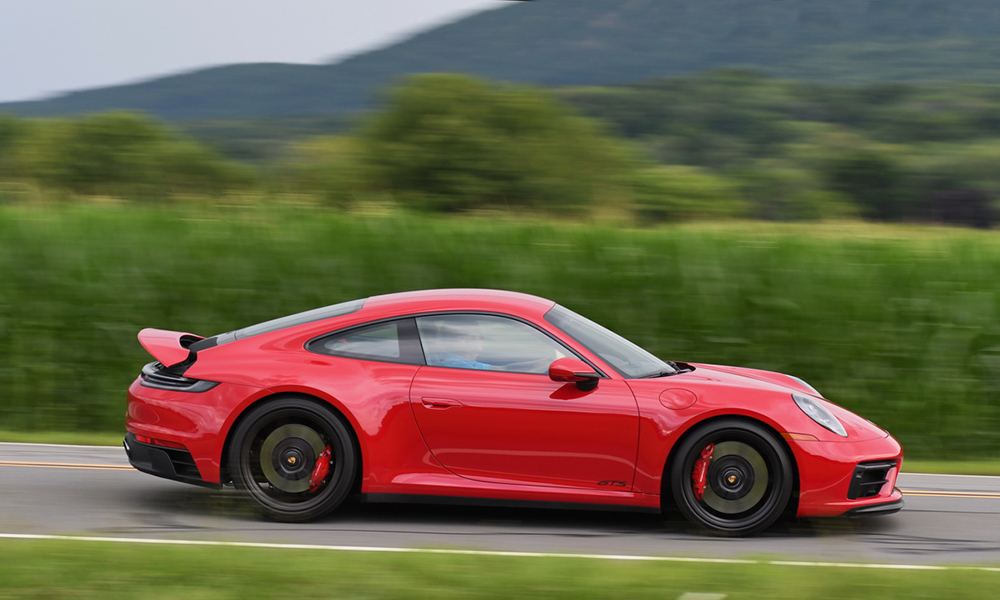
Photo: David Haueter
On the road, there’s little to fault with the 911 Carrera 4 GTS. It gives the driver a great experience behind the wheel, with a powerful and flexible motor mated to a super quick dual-clutch transmission and feelsome brakes.
More importantly, the handling and steering feel is phenomenal. The grip from the front end when turning into corners or in sharp transitions is impressive, and there’s a lot of feel through the steering wheel and the seat.
With most of the power being sent to the rear wheels most of the time, you still get that rear-drive feel but have all-wheel drive if you need it.
One great thing about all Porsche 911s is that despite getting larger and heavier over the years, they all still feel like 911s, and that goes for the current model line as well. You can get into a base model 911 Carrera or the 911 GT3 and know they come from the same place.
For those who would maybe like to own a GT3 but want a higher level of comfort and usability without sacrificing much in terms of performance, the 911 Carrera 4 GTS is a great choice.
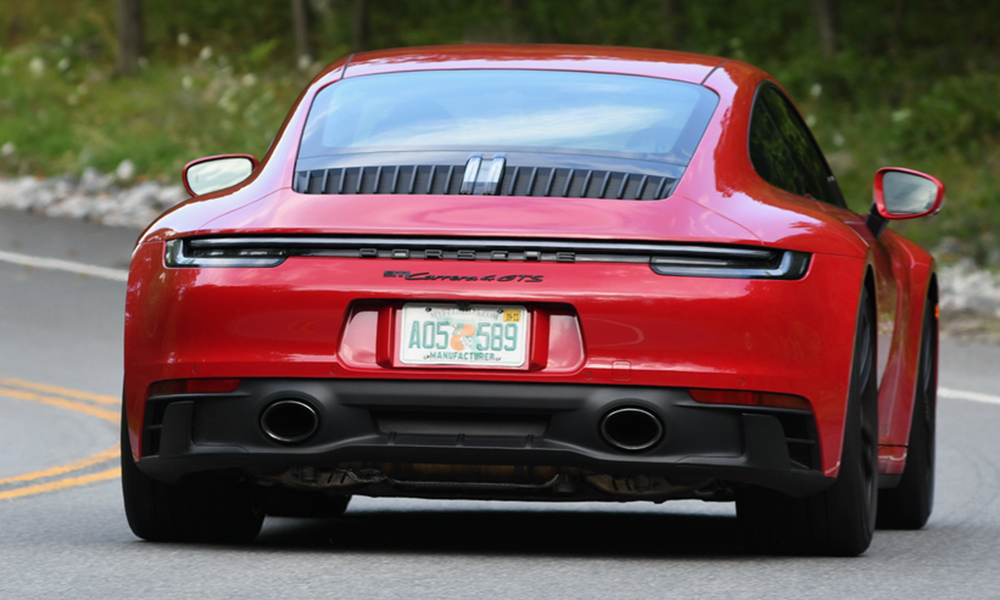
Photo: David Haueter


















